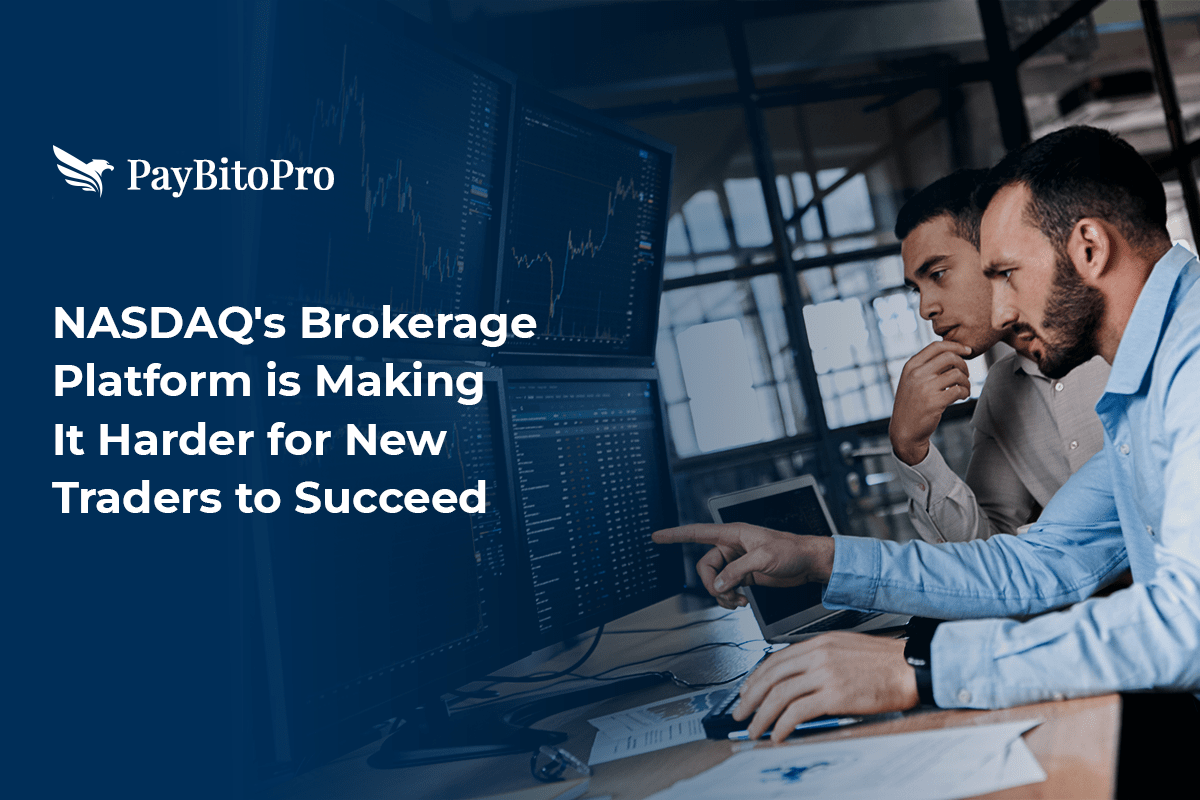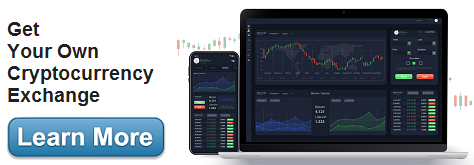NASDAQ hinders new traders.
- March 22, 2023
- Jennifer Moore

NASDAQ, one of the world’s largest exchanges, provides a platform for trading securities. However, for new traders and enterprises, it can be challenging to succeed. There are significant drawbacks, including high setup costs and financial exclusion, that can limit opportunities for new brokers. This article discusses the obstacles facing new traders on NASDAQ’s brokerage platform and why changes are necessary.
NASDAQ’s Brokerage Setbacks
The exchange broker platform presented by NASDAQ has several drawbacks, including:
-
High Setup Costs: A Barrier to Entry
NASDAQ’s brokerage platform is designed to cater to institutional investors with significant capital, making it challenging for new brokers to enter the market. Therefore, the platform requires a high setup cost that can range from $5,000 to $500,000, which is a significant barrier to entry. New traders often struggle to gather the resources needed to meet these costs, limiting their ability to compete in the market. In addition, the minimum waiting period for enlistment is six months, amidst countless obstacles.
-
Financial Exclusion: A Further Restriction
Another significant challenge for new traders on NASDAQ’s brokerage platform is financial exclusion. Moreover, NASDAQ’s membership is limited to institutional traders. Low-income traders face significant barriers to entry, further restricting the number of potential brokers on the platform. Therefore, the lack of affordable trading options excludes a significant portion of traders, limiting the potential for diversity and competition in the market.
-
Brokerage Offerings Lacking AI and Cloud
NASDAQ’s obsolete platform lacks AI-based decision-making and high-frequency algorithmic trading benefits for retail traders. While institutional traders use AI for improved insights and market research, retail traders lack access due to financial constraints. Therefore, they lack the features available to institutional investors.
Meanwhile, cloud integration facilitates access to trade without forcing brokers to host and manage their servers. Moreover, it also helps in real-time data sharing from multiple market makers. Distancing from cloud innovation results in NASDAQ restricting its broker platform to participants financially and technically adept for expensive on-premises architecture.
-
Algo-Trading Advantage for Institutional Traders
High-frequency algorithms make lightning-fast trade decisions, which humans cannot do. Therefore, they make unbiased and data-driven decisions that are not affected by emotions. Due to the high cost, not everyone can access advanced AI resources for market analysis, nor can they leverage algo-trading.
-
Insider Trading and Market Manipulation
Market manipulation is common among powerful market makers, and institutional members have faced significant fines for engaging in such practices. However, there is often a bias towards enlisted companies, even those engaged in insider trading. NASDAQ does not delist these repeat offenders, yet restricts those planning to start an independent brokerage firm.
The Need for Changes in NASDAQ’s Brokerage Platform
To create a level playing field, NASDAQ must address these challenges to ensure that new traders have equal opportunities for success. Here are some changes that could be made:
-
Lower Setup Cost and Time
To encourage new traders to enter the market, NASDAQ should consider lowering the setup costs. By reducing the barrier to entry, more traders can access the platform, creating competition and diversity in the market. A lower setup cost would also attract new traders who would bring fresh ideas and strategies to the market. Modern exchange platforms are capable of offering instant brokerage service offers at monthly charges as low as $49.99. Advanced innovations also accelerate the registration process, with exchanges like PayBitoPro offering a registered broker platform within 3 minutes.
-
Improve Financial Inclusion
To promote global exchanges, it is crucial to offer scalable brokerage services and promote financial inclusion. Reducing costs, eligibility criteria, and operational difficulties through accessible cloud-based platforms will empower brokers in the Internet era. This means removing coding, server hosting, and other complex technical components.
-
Offer Brokerage as a Service (BaaS)
Current cloud-based broker platforms boost financial inclusion, enabling brokers to succeed in the digital era. The emergence of Brokerage as a Service (BaaS) marks a new era of disruption in the field of exchange brokerage, leveraging cloud integration and other innovations. BaaS adoption brings in noticeable benefits such as improved affordability, ease of use, and instant accessibility to brokerage service offerings.
-
Introduce Affordable AI-Trading Options
Modern exchanges allow algorithmic trading for buyers and sellers through trading bots with tailored or adjustable algorithms. The bots are easy to use, with options to complete setup within 2 minutes. The platform also offers multiple trading options, including a robust order management system and powerful matching engines to support high-volume transactions.
Modern broker platforms often feature a Data Engine that assesses anonymous transactions, assigns values, and ranks them using a neural network. It gathers news from various sources, performs impact analysis to measure market sentiments, and issues buy/sell signals to individual traders. The Engine improves over time, gaining knowledge from veteran traders and market conditions.
-
Democratize Trading Access and White Labeling
With democratization, investors can access real-time data and AI insights to prevent insider trading. Increased competition leads to reduced manipulation and better oversight. Fairness and transparency in brokerage through democratization can prevent market crises.
Entrepreneurs and enterprises seeking to start their own brokerage firms use white-label broker solutions. Top-rated white-label exchange providers offer customization and self-branding options along with a free trial.
Brokering World Hunger Away: Initiating Change with Collective Efforts
The NASDAQ exchange has announced its diversification plans and ventures into a technology service-based company. Therefore, businesses aim to generate profits, but they can also make a positive social impact.
Intermediaries can aid social welfare and not only focus on financial gain. Moreover, they can participate in campaigns like Brokering World Hunger Away, where the PayBitoPro exchange donates matching funds to feed hungry children globally, without affecting the brokers’ earnings.
Conclusion
The conventional brokerage platform presents significant challenges for new traders, including high setup costs, financial exclusion, and market manipulation. To create a more level playing field, exchanges must address these issues and upgrade. By reducing the barrier to entry, introducing affordable trading options, cutting-edge innovations, and facilitating welfare contribution, exchange-broker platforms like PayBitoPro can create an environment that promotes diversity, competition, and fair play.
Categories
- AI (6)
- Altcoins (9)
- Banking (10)
- Bitcoin (110)
- Bitcoin ETF (6)
- Bitcoin Price (30)
- Blockchain (46)
- Brokering World Hunger Away (16)
- CBDC (11)
- COVID-19 (3)
- Crypto ATMs (1)
- Crypto Banking (14)
- Crypto Bill (1)
- Crypto broker platform (24)
- Crypto Investment (3)
- Crypto Markets (2)
- Crypto Payment (24)
- Crypto Prices (1)
- Crypto Trading (85)
- Cryptocurrency (299)
- Cryptocurrency Exchange (88)
- Data Visualization (2)
- Decentralized Finance (7)
- DeFi Payment (9)
- DEX (3)
- Digital Currency (22)
- FAQ (6)
- Finance (22)
- Financial Equality (4)
- Financial Freedom (5)
- Forex (24)
- ICO (1)
- Investment (11)
- Mining (3)
- News (60)
- NFTs (2)
- PayBitoPro (477)
- PayBitoPro Coin Listing (6)
- PayBitoPro Exchange (2)
- Post COVID Digital Transformation (1)
- Press Release (130)
- Privacy & Security (1)
- Real Estate (1)
- Stablecoin (1)
- Technology (14)
- Uncategorized (2)
- US Presidential Election (2)
- Utility Coin (1)
- White Label Crypto Broker Solution (1)
- White Label Crypto Exchange (4)





